One of the major obstacles to growing new organs _ replacement hearts, lungs and kidneys _ is the difficulty researchers face in building blood vessels that keep the tissues alive, but new findings from the University of Michigan could help overcome this roadblock.
Apr 4th, 2013
Read more
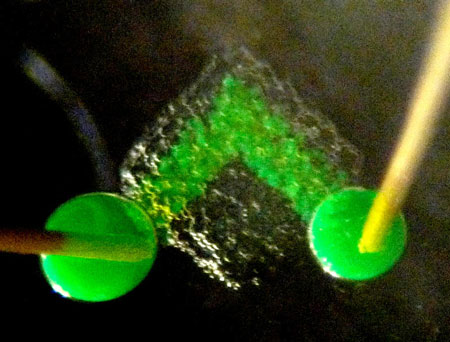 A custom-built programmable 3D printer can create materials with several of the properties of living tissues, Oxford University scientists have demonstrated.
A custom-built programmable 3D printer can create materials with several of the properties of living tissues, Oxford University scientists have demonstrated.
Apr 4th, 2013
Read more
Scientists are reporting an advance in re-engineering photosynthesis to transform plants into bio-factories that manufacture high-value ingredients for medicines, fabrics, fuels and other products.
Apr 4th, 2013
Read more
Treating patients with cells may one day become as common as it is now to treat the sick with drugs made from engineered proteins, antibodies or smaller chemicals, according to UC San Francisco researchers.
Apr 3rd, 2013
Read more
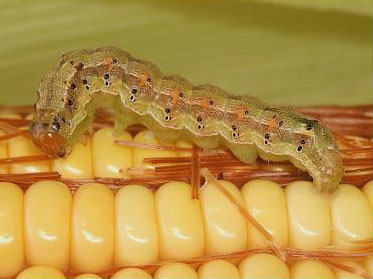 Crucial assumptions underlying multi-toxin crops don't always apply, a University of Arizona study shows. The results help explain why one major pest is evolving resistance faster than predicted and offer ideas for more sustainable pest control.
Crucial assumptions underlying multi-toxin crops don't always apply, a University of Arizona study shows. The results help explain why one major pest is evolving resistance faster than predicted and offer ideas for more sustainable pest control.
Mar 30th, 2013
Read more
Explosive growth in the field of tissue engineering and regenerative medicine has led to innovative and promising applications and techniques, many of which are now being tested in human clinical trials.
Mar 30th, 2013
Read more
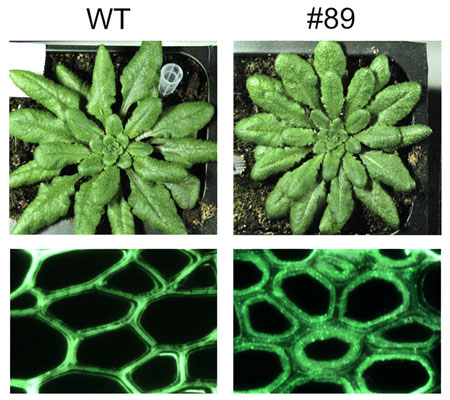 Genetically engineered Arabidopsis plants yielded as much biomass as wild types (WT) but with enhanced polysaccharide deposition in the fibers of their cell walls.
Genetically engineered Arabidopsis plants yielded as much biomass as wild types (WT) but with enhanced polysaccharide deposition in the fibers of their cell walls.
Mar 29th, 2013
Read more
 A chromosome is rarely found in the shape we are used to seeing in biology books, that is to say the typical double rod shape. It is usually 'diluted' in the nucleus and creates a bundle that under the microscope appears as a messy tangle. A research coordinated by the scientists at SISSA of Trieste has now developed and studied a numeric model of the chromosome that supports the experimental data and provides a hypothesis on the bundle's function.
A chromosome is rarely found in the shape we are used to seeing in biology books, that is to say the typical double rod shape. It is usually 'diluted' in the nucleus and creates a bundle that under the microscope appears as a messy tangle. A research coordinated by the scientists at SISSA of Trieste has now developed and studied a numeric model of the chromosome that supports the experimental data and provides a hypothesis on the bundle's function.
Mar 29th, 2013
Read more
MIT alumni's startup provides rapid, cost-effective microRNA profiling, which is beneficial for diagnosing diseases.
Mar 29th, 2013
Read more
A team of Stanford University bioengineers has taken computing beyond mechanics and electronics into the living realm of biology. They detail a biological transistor made from genetic material - DNA and RNA - in place of gears or electrons. The team calls its biological transistor the 'transcriptor'.
Mar 28th, 2013
Read more
Like tiny, crawling compass needles, whole living cells and cell fragments orient and move in response to electric fields - but in opposite directions, scientists at the University of California, Davis, have found. Their results could ultimately lead to new ways to heal wounds and deliver stem cell therapies.
Mar 28th, 2013
Read more
 Common fruit fly key to discovery as to how memories are written into brain cells.
Common fruit fly key to discovery as to how memories are written into brain cells.
Mar 28th, 2013
Read more
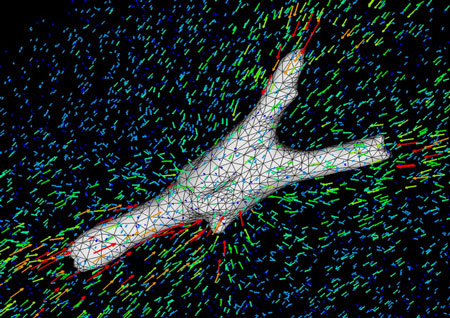 A team of researchers from the University of Pennsylvania has generated new insight on how a stem cell's environment influences what type of cell a stem cell will become. They have shown that whether human mesenchymal stem cells turn into fat or bone cells depends partially on how well they can "grip" the material they are growing in.
A team of researchers from the University of Pennsylvania has generated new insight on how a stem cell's environment influences what type of cell a stem cell will become. They have shown that whether human mesenchymal stem cells turn into fat or bone cells depends partially on how well they can "grip" the material they are growing in.
Mar 28th, 2013
Read more
Some people may joke about living on caffeine, but scientists now have genetically engineered E. coli bacteria to do that - literally. They describe bacteria being 'addicted' to caffeine in a way that promises practical uses ranging from decontamination of wastewater to bioproduction of medications for asthma.
Mar 27th, 2013
Read more
Scientists at Mainz University develop a novel screening procedure for accurately determining the amount of animal, plant, and microbial substances in foods.
Mar 27th, 2013
Read more
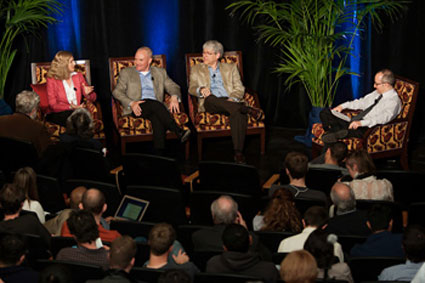 Thirty years ago, the future lay in programming computers. Today, it's programming cells.
Thirty years ago, the future lay in programming computers. Today, it's programming cells.
Mar 27th, 2013
Read more
Researchers with the joint program between IRB Barcelona and the Barcelona Supercomputing Center (BSC) have devised a new strategy to study the shape of proteins.
Mar 27th, 2013
Read more
New research explains how certain traits can pass down from one generation to the next - at least in plants - without following the accepted rules of genetics.
Mar 26th, 2013
Read more

 Subscribe to our Biotechnology News feed
Subscribe to our Biotechnology News feed





